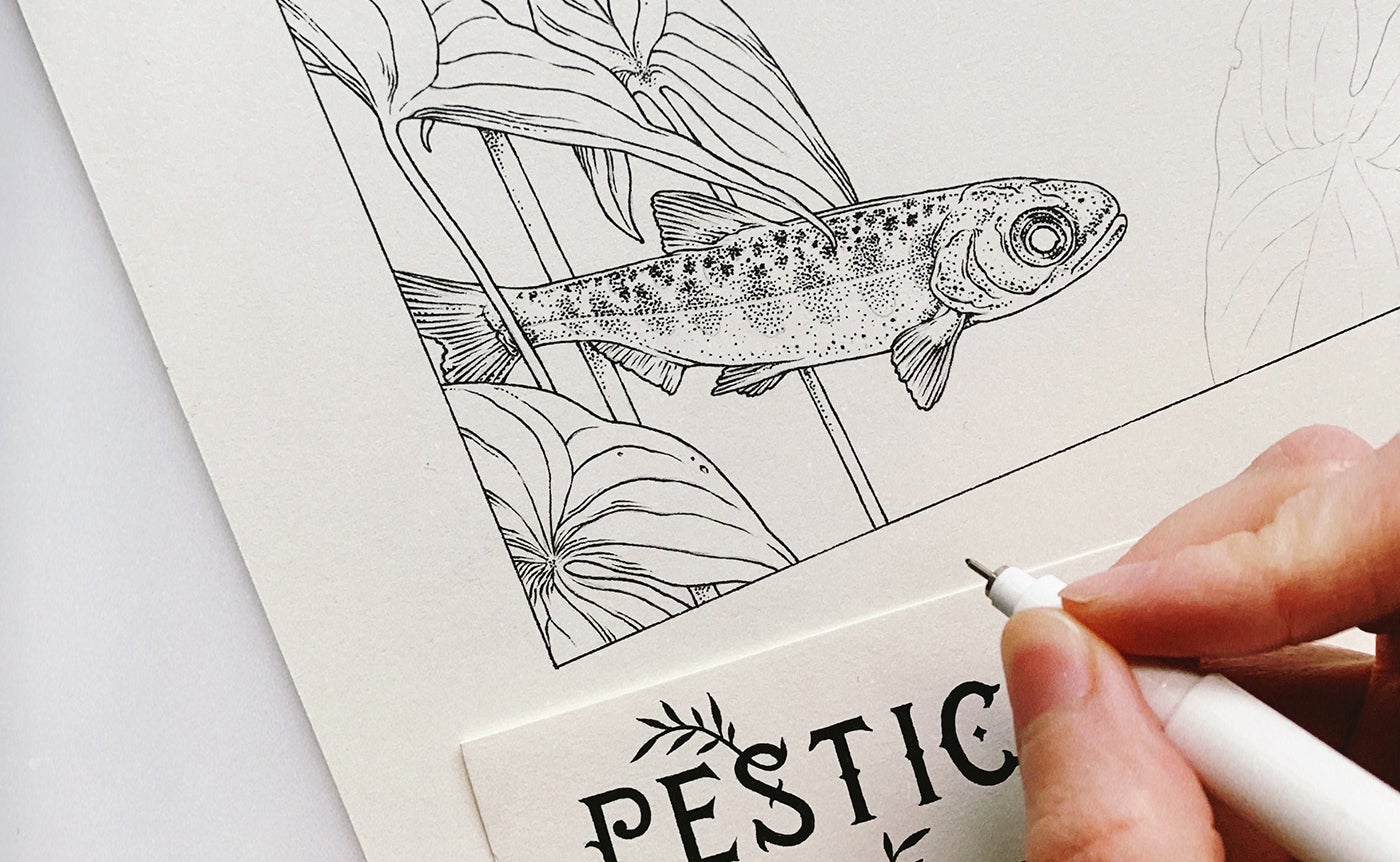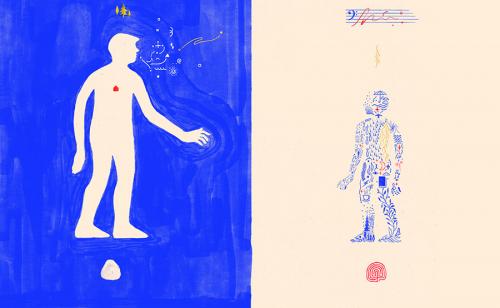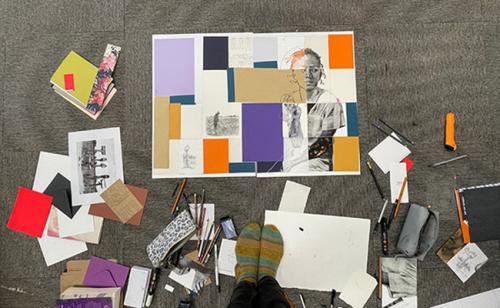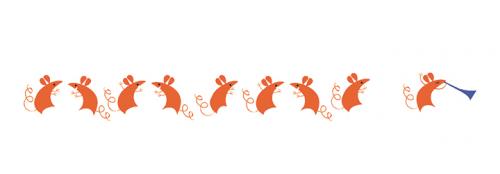This Folio Life: Illustrating an ecological masterpiece
Folio Art Director Sheri Gee spoke to artist Teagan White on their illustration background and experience illustrating Rachel Carson’s ground-breaking book, Silent Spring.
Tell me a bit about yourself
I’m an artist and outsider naturalist influenced by years of living in the Midwest and Great Lakes region. I went to school for illustration at the Minneapolis College of Art & Design, and currently live in the Pacific Northwest with my partner and their seven-year-old daughter.
My work is the result of direct experience with natural phenomena and dedicated communication with the land around me, particularly the declining white oak savanna and the turbulent Oregon coastline. I’m interested in art’s potential to convey urgent truths about the state of the world, help us think imaginatively about solutions, and bring us into closer alignment with wild Nature.
I work in an assortment of media, most often watercolor and gouache on paper, and I do self-directed gallery work, a small amount of commercial work, and also make picture books in a kid-oriented art style.
When did you decide you wanted to be an illustrator?
I’m not sure that I ever had an iconic moment when I realized that being an illustrator was the right path for me, and I’m still not convinced that it necessarily is the right path to be on. I think I arrived here due to a refusal to do anything else — being in Nature and making art are the only things I want to spend my time doing, so I keep finding ways to keep doing those things. I’m disappointed every day by the lack of opportunities, for both myself and others, to support themselves while pursuing an authentic creative practice without participating in the spectacle of capitalist marketing or being complicit in behind-the-scenes exploitation. But sometimes projects come along where your vision and values align with another person’s, and you have the opportunity to work together in elevating a thing that you both really care about, and the feeling I get from that is what convinces me there is enormous value in this collaborative art-making process called illustration.
Had you read Silent Spring before this commission?
I read Silent Spring in high school as part of an Environmental Studies class. It made an impact, but at the time I definitely understood it in past tense. I believed Rachel Carson's revelations about the devastating ecological effects of DDT had ensured that the US government and the chemical industry would never again be allowed to unleash poison into the environment. But as an adult entering what John P. Clark terms the Necrocene, or the new age of death and extinction caused by capitalist accumulation, it's clear to me that the dominant society still hasn't come to terms with the core message of Carson's book: that we humans are woven into a marvellously intricate web of life, not above or separate from any other part of Nature, and when we wage war on the Earth we simultaneously make it unfit for our own survival. Working on these illustrations with The Folio Society felt like an opportunity to pay homage to a writer who was an early influence on my own philosophy, and to help bring her work to the attention of a new generation during a time when her words are more important than ever.
It was an absolute joy to commission you for this project, someone whose heart is in the environment with every brush and pen stroke. We knew that the commission should take the form of illustrated quotes but otherwise really wanted your ideas to take that forward. How did you approach the commission?
In preparation for illustrating the book, I re-read the text in search of the most impactful and subversive passages, and took note of any imagery that could help emphasize Carson's themes.
A lot of time was spent researching specific species – for example, I selected sweet fern and a beetle species that feeds on it (Cryptocephalus insertus) for one illustration because sweet fern grows in disturbed areas such as roadsides, and forms a weed-resistant canopy to help revitalize land that's been stripped of plant life. For other images, I made connections to my own bioregion: since the life cycle of salmon in the Pacific Northwest was discussed in the text, I illustrated a juvenile chinook salmon alongside wapato, a plant that used to be common in the wetland and floodplain habitats that are critical to developing salmon here in Oregon. The robin and elm branch were obvious choices given the space they occupy in the book, but still had a personal connection for me: I grew up with a giant elm tree in the front yard of my childhood home in Chicago, and vividly remember when it became infected with Dutch elm disease and had to be cut down.
Finding intimate associations like these is an important part of my illustration process. I think that to make art that speaks deeply to people, you have to care about it deeply yourself, and for me that has to go beyond technique or aesthetics. I need to summon the reason for the art the entire time I’m making it, and hold that in myself while I work, or else it becomes mechanical and the magic of it is lost. I think that this process of finding personal connections in the source material mirrors what people experience when they look at illustrations — after my job is done, it’s up to the viewer to find their own meaning and emotion in what I’ve created.
Can you tell us a bit more about how you created your illustrations for Silent Spring?
After Sheri helped me narrow down to the perfect pairings of imagery and quotations, there was the question of how to use color and composition to strike the right balance between somber and beautiful. We explored a variety of looks for the cover, and I think that the direction we landed on does a good job of expressing the seriousness of the subject matter while still embodying a sense of hope and renewal.
The final illustrations were created by hand in ink and gouache, and then digitally prepped for printing in metallic bronze ink (for the interiors) and blocking on cloth (for the cover).













